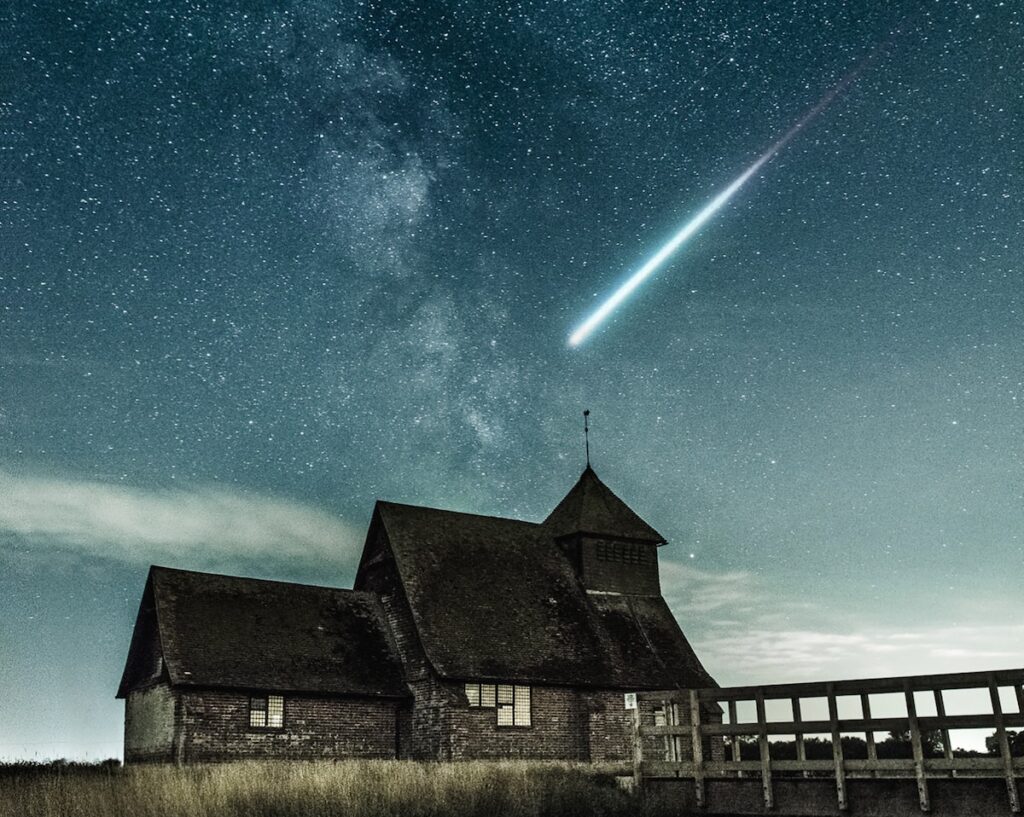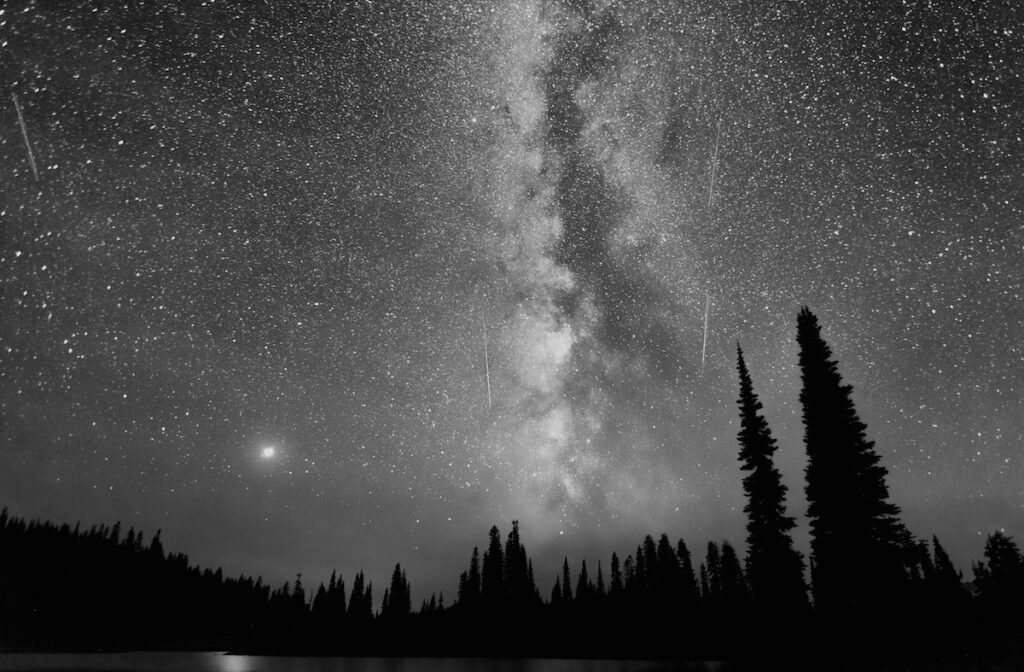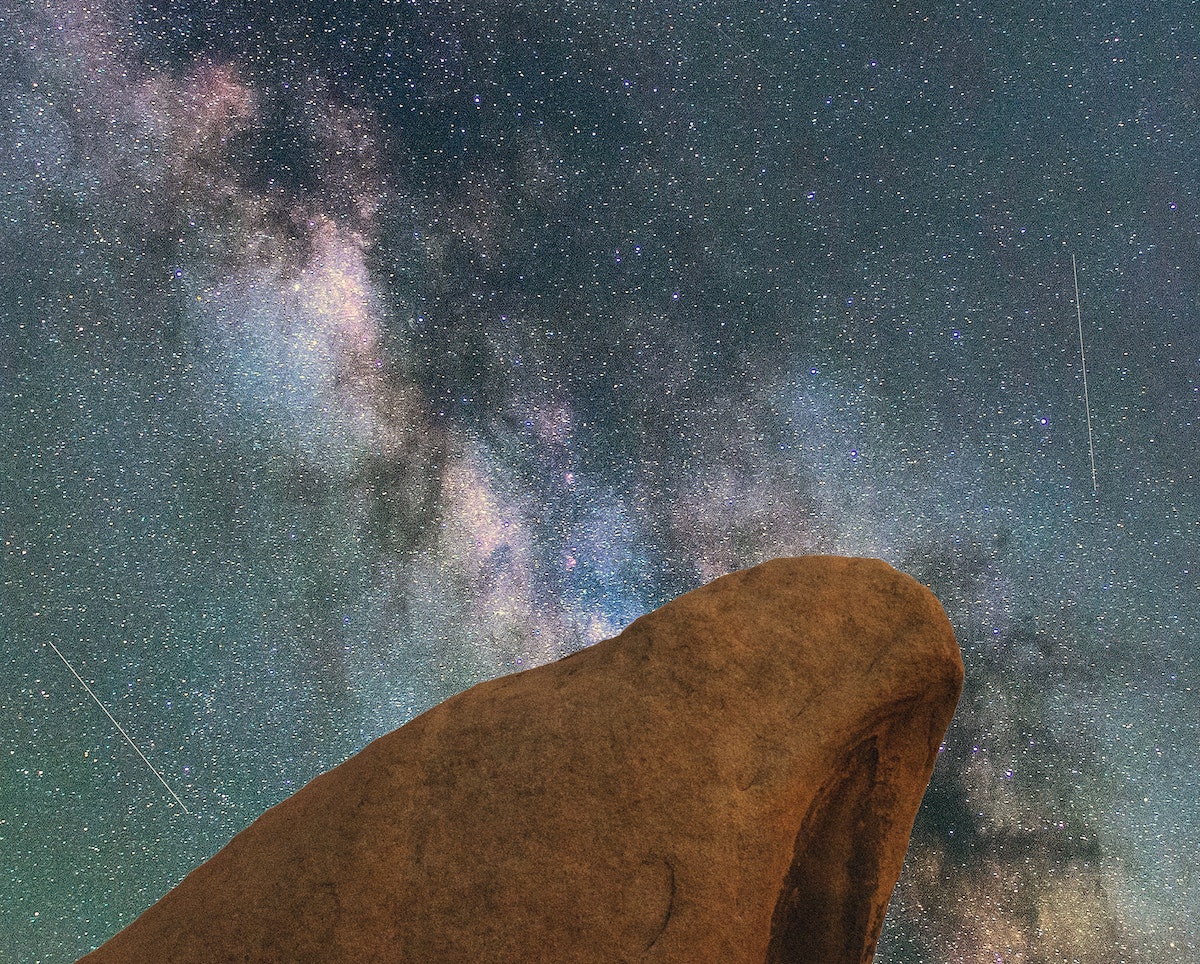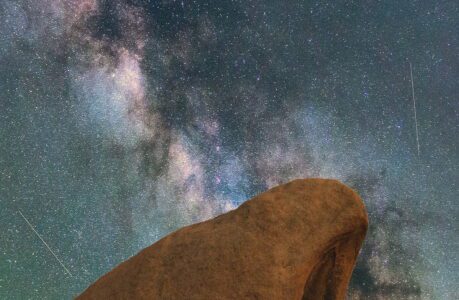Meteor showers are one of the most awe-inspiring events that can be observed in the night sky. A meteor shower occurs when Earth passes through the debris of a comet, causing tiny particles to burn up in the Earth’s atmosphere and create a display of shooting stars. The result is a celestial show that can last for several hours, with dozens or even hundreds of meteors visible in a single hour.
One of the most famous meteor showers is the Perseids, which occurs annually in August. This meteor shower is named after the constellation Perseus, from which the meteors appear to originate. The Perseids are known for their bright, fast-moving meteors, and can be seen from anywhere on Earth.
Another well-known meteor shower is the Geminids, which occurs in December and is named after the constellation Gemini. The Geminids are known for their bright, colourful meteors, and are often considered one of the best meteor showers of the year.
Meteor showers are not only beautiful to watch, but they also provide valuable information for astronomers. Meteor showers can help astronomers learn more about the origins of comets and the formation of the solar system. By studying the composition of the meteoroids, astronomers can learn about the composition of comets and other celestial bodies.
To see a meteor shower, all you need is a clear sky and a comfortable spot to lie down. Meteor showers are best viewed away from city lights, so it’s a good idea to find a dark location with a clear view of the sky. It’s also important to give your eyes time to adjust to the darkness, so it’s best to wait at least 30 minutes after sunset to begin observing.
Overall, meteor showers are a stunning display of nature’s beauty and a great opportunity to connect with the universe. Whether you’re an astronomer or simply a lover of the night sky, meteor showers are a must-see event.
What is the difference between a meteor, a meteorite, an asteroid and a comet
A meteor, a meteorite, an asteroid, and a comet are all related to objects in space, but they are different from each other in several ways.
A meteor is a bright streak of light that is seen in the night sky when a small piece of rock or debris from space enters the Earth’s atmosphere and burns up. Meteors are often referred to as “shooting stars” and are typically only visible for a few seconds.
A meteorite, on the other hand, is a piece of rock or debris from space that has survived its passage through the Earth’s atmosphere and has landed on the surface of the Earth. Meteorites can be made of rock, metal, or a mixture of both and are often valuable scientific specimens.
An asteroid is a small, rocky body that orbits the sun. Most asteroids are located in the asteroid belt between Mars and Jupiter, but some can come close to the Earth. Some asteroids are thought to be the remains of a failed planet, while others may be the building blocks of a future planet.
A comet is a small, icy body that orbits the sun. When a comet gets close to the sun, it starts to heat up and release gas and dust, creating a bright, glowing tail that can be seen from Earth. Comets are believed to be made up of ice, dust, and rock and are thought to be some of the oldest objects in the solar system.
In conclusion, a meteor is a bright streak of light in the sky, a meteorite is a piece of rock or debris that has landed on Earth, an asteroid is a small, rocky body that orbits the sun, and a comet is a small, icy body that releases gas and dust when it gets close to the sun.

What causes a meteor shower
A meteor shower occurs when Earth passes through the debris of a comet or a broken asteroid. The debris, made up of small particles of rock and ice, enters the Earth’s atmosphere and burns up, creating a display of shooting stars.
The specific path of a meteor shower is determined by the orbit of the comet or asteroid that produced the debris. As the Earth passes through this debris field, the particles enter the Earth’s atmosphere and burn up, creating the bright streaks of light that are visible in the night sky.
The frequency and intensity of a meteor shower is determined by the size and concentration of the particles in the debris field. If the debris is spread out over a large area, the meteor shower will be less intense. If the debris is concentrated in a small area, the meteor shower will be more intense.
Meteor showers are named after the constellation from which the meteors appear to originate. For example, the Perseids meteor shower is named after the constellation Perseus, and the Geminids meteor shower is named after the constellation Gemini.
In summary, a meteor shower occurs when Earth passes through the debris of a comet or a broken asteroid, causing the small particles of rock and ice to burn up in the Earth’s atmosphere and create a display of shooting stars.

What are the main meteor shows that I can see from Ireland and when
There are several meteor showers that are visible from Ireland throughout the year. Here are some of the main meteor showers and the approximate dates that they are visible:
- Quadrantids (January 3-4) – This meteor shower is known for its bright, fast-moving meteors and is usually visible from late December to early January.
- Lyrids (April 21-22) – This meteor shower is named after the constellation Lyra and is usually visible from late April to early May.
- Eta Aquariids (May 5-6) – This meteor shower is named after the star Eta Aquarii and is usually visible from late April to early May.
- Perseids (August 12-13) – This is one of the most famous meteor showers and is named after the constellation Perseus. The Perseids are known for their bright, fast-moving meteors and are usually visible from late July to early August.
- Draconids (October 7-8) – This meteor shower is named after the constellation Draco and is usually visible from early to mid-October.
- Leonids (November 17-18) – This meteor shower is named after the constellation Leo and is usually visible from late November to early December.
- Geminids (December 13-14) – This meteor shower is known for its bright, colourful meteors and is named after the constellation Gemini. The Geminids are often considered one of the best meteor showers of the year and are usually visible from mid-December to early January.
It’s important to note that meteor showers are dependent on weather conditions and can be affected by the presence of the moon. To get the best view of a meteor shower, it’s best to find a dark location away from city lights and give your eyes time to adjust to the darkness.

